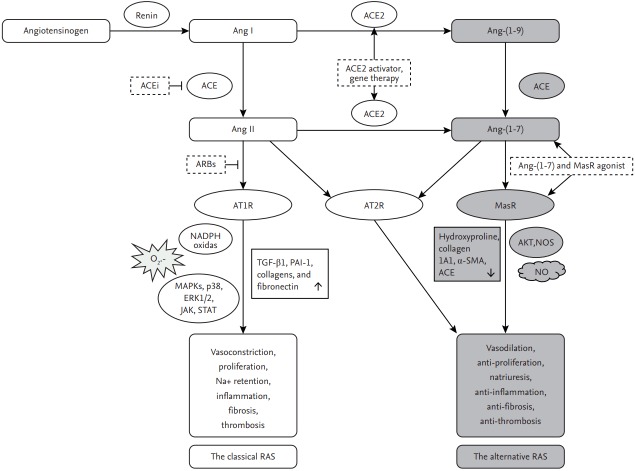Figure 1.
Overview of the renin-angiotensin system (RAS). In the RAS pathways, angiotensin (Ang) II is the main effector regulating vasoconstriction, sodium homoeostasis, fibrosis, cell proliferation, and inflammation in various diseases, including liver cirrhosis, via the angiotensin-converting enzyme (ACE)/Ang II/Ang II type 1 receptor (AT1R) axis, which defines the classical RAS. Mediators of the alternative RAS have vasodilatory, antigrowth, proapoptotic, and anti-inflammatory properties that counterbalance the effects of the classical RAS axis to reduce hepatic fibrogenesis and portal hypertension. Ang II type 2 receptor (AT2R), Ang-(1–7) Mas receptor (MasR), ACE inhibitor (ACEi), AT1R blocker (ARB), mitogen-activated protein kinase (MAPK), Janus kinase (JAK), and signal transducer and activator of transcription (STAT), extracellular signal-regulated kinase (ERK), transforming growth factor β1 (TGF-β1), plasminogen activator inhibitor-1 (PAI-1), nitric oxide (NO), NO synthase (NOS), α-smooth muscle actin (α-SMA). NADPH, nicotinamide adenine dinucleotide phosphate.

